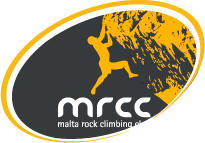
Human settlement in Malta dates back to around 5200 BC. The temple period, which started in around 3600 BC, led to the construction of some amazing megalithic structures, including the Ġgantija Temples in Gozo, considered to be the oldest free-standing building in the world. Lebanon colonized the islands at around 1000 BC, to be followed by the Greeks, Carthaginians and the Romans. Remains of Roman civilisation in Malta and Gozo point to the importance the islands enjoyed at the time.
The New Testament records that in 60 AD, St Paul was shipwrecked on the island. Arab occupation followed in AD 870 which among others left a strong influence on the country’s language, Malti. The subsequent arrival of the Normans in 1091 marked the gradual change from an Arab cultural influence to a European one. In 1530 the Spanish king handed over the islands to the Knight Hospitallers of St. John. For the next 275 years, the Knights made the island their home, building towns, palaces, churches and fortifications. The confrontation between the Knights and their nemesis, the Ottoman Turks, came to a head with the Great Siege of 1565. The long reign of the Knights ended with the arrival of Napoleon Bonaparte in 1798. The French occupation lasted for only two years, at the end of which Britain took over the islands, which became part of the British Empire. The Second World War saw Malta playing a pivotal role in the Allied war effort. Malta became an independent state in 1964 and proclaimed a republic in 1974. Thirty years later Malta became a member of the European Union.

Malta forms the top of a limestone peak at the centre of the Mediterranean which, since the Pliocene era five million years ago, has enjoyed a land bridge to Sicily on and off, depending on the level of the water. The islands slope gently down towards the north east. The south and west coasts are high cliffs breached occasionally by narrow valleys and small beaches. The north and east coast slips into the sea forming bays and harbours. The Great Fault (Victoria Lines Fault) and the South Gozo Fault are a parallel set of faults that shape the area in between them in a typical ‘Horst & Graben’ landscape with blocks of the intervening land having fallen to greater or lesser extents.

Rock Layers
LOWER CORALLINE LIMESTONE
It is the hardest rock here and weathers beautifully for climbing. Sometimes extensively pocketed and with deep rounded cracks, or prickly and edgy, it is always compact and solid. Even thin threads can take a fair amount of effort to break.
GLOBIGERINA LIMESTONE
Globigerina limestone is a soft, friable rock that is like loose sandstone, weathers horribly, is always dusty and cannot take any shock loading.
BLUE CLAY
Not so much a rock as a layer of clay that is conveniently impermeable.
GREENSANDS
Scarcely visible anywhere on Malta but very much in evidence on Gozo is the greensands, which you will only see as a deep orange hue.
UPPER CORALLINE LIMESTONE
Malta’s capstone is upper coralline limestone, harder than the last three but varying enormously in reliability. Some sections are well hard enough to climb on but just a few metres away and you could easily pull off a huge chunk that gave no prior indication of its propensity to dislodge!



